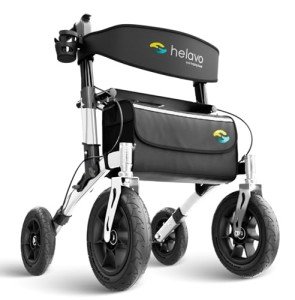Mobility Aids for the Elderly: A Comprehensive Guide
As individuals age, mobility can become a substantial issue. Lowered strength, balance concerns, and other health conditions can make it challenging for elderly individuals to move freely and safely. Thankfully, numerous mobility aids are created to improve mobility and provide support to make sure higher self-reliance. www.mymobilityscooters.uk will check out the kinds of mobility help available for the elderly, their advantages, and crucial considerations in choosing the right one.
Kinds Of Mobility Aids for the Elderly
Mobility help can considerably enhance an elderly person's quality of life, enabling them to bring out everyday activities and maintain their self-reliance. Below is a table categorizing a few of the most common mobility help together with their advantages.
| Type of Mobility Aid | Description | Advantages |
|---|---|---|
| Canes | A single walking stick that supplies extra support and balance. | Provides stability, promotes an upright posture. |
| Walkers | A frame with four legs that uses maximum support and balance when walking. | Perfect for those with limited balance; enhances security. |
| Rollators | A walker on wheels with a seat, hand brakes, and a storage bag. | Convenient for brief breaks; increased mobility. |
| Wheelchairs | A chair installed on wheels that requires either handbook or electrical propulsion. | For people with extreme mobility limitations. |
| Scooters | Motorized mobility cars, typically used for longer distances. | Supplies self-reliance for outdoor activities. |
| Stair Lifts | A motorized chair that takes a trip up and down stairs. | Increases home ease of access for multi-level homes. |
| Transfer Aids | Devices like transfer boards or slings that help move people from one location to another. | Promotes security during transfers and reduces falls. |
Factors to consider in Choosing a Mobility Aid
Selecting the right mobility aid depends on various factors, consisting of the person's physical condition, living environment, and personal preferences. Below are some important considerations:
Assessment of Mobility Needs:
- Consult with health care providers to get an accurate evaluation of the person's mobility level and specific constraints.
Kind Of Aid Required:
- Consider whether a walking stick, walker, wheelchair, or another type of aid is most suitable for the individual.
Living Environment:
- Evaluate the home and environments. For instance, those residing in multi-story homes may benefit from stair lifts, while those in a smaller area might require a more compact solution.
User-Friendly Features:
- Look for features like adjustable heights, lightweight styles for ease of usage, and storage compartments for convenience.
Cost and Insurance:
- Research offered options within budget plan and whether Medicare or personal insurance can cover any part of the cost.
Benefits of Mobility Aids
Mobility help provide numerous advantages for the elderly, from useful safety features to emotional wellness. Some key benefits consist of:
- Enhanced Independence: Mobility help can help seniors keep self-reliance, enabling them to carry out day-to-day activities without assistance.
- Fall Prevention: With boosted stability and support, mobility aids can considerably reduce the risks of falling, which is vital for the elderly.
- Improved Social Engagement: By helping with easier motion, mobility help motivate more interaction with family and good friends, combating sensations of seclusion.
- Greater Comfort: Many mobility aids are designed with comfort in mind, supplying support that alleviates stress on joints and muscles.
- Much Better Quality of Life: Overall, improved mobility adds to a better quality of life, enabling seniors to take part more totally in their neighborhood.
Frequently Asked Questions (FAQs)
What are the indications that an elderly person may require a mobility aid?
Indications consist of difficulty walking, frequent falls, dependence on furnishings for stability, feeling unstable, or if the specific expresses worry of falling.
Can mobility help be used outside along with inside?
Yes, lots of mobility aids such as walkers, rollators, and scooters are developed for use both inside and outdoors. However, consider the terrain when selecting a proper aid.
How can I motivate an elderly person to utilize a mobility aid?
Support can be attained through education on the benefits, providing assistance in choosing the right aid, and resolving any psychological barriers they might have.
Can mobility aids be individualized or customized?
Yes, lots of mobility aids include adjustable features such as height settings or accessories like baskets and trays. Speak with retailers or health care service providers for choices.
Exist grants or moneying options offered for mobility help?
Lots of organizations, including non-profits and federal government programs, might use grants, loans, or aids for mobility help. Talk to regional companies for additional information.
Picking the best mobility aid for seniors can be a difficult task, but comprehending the types readily available and considering particular needs can make the process easier. Not just do mobility help promote security and prevent falls, however they likewise considerably contribute to a senior's independence and lifestyle. As society continues to embrace aging populations, the value of mobility help will just grow, ensuring that older adults can navigate their world with confidence and dignity.

